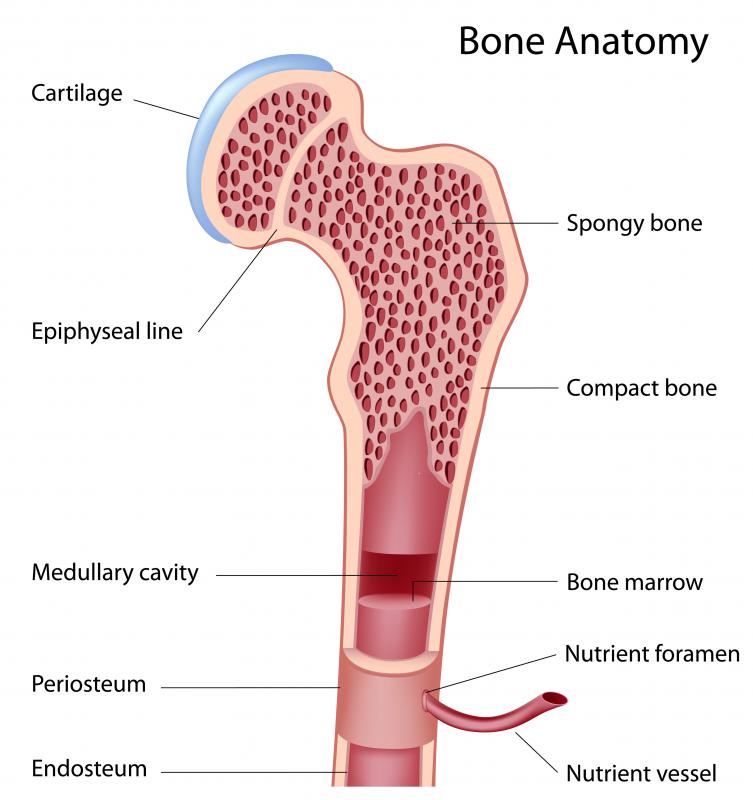At WiseGEEK, we're committed to delivering accurate, trustworthy information. Our expert-authored content is rigorously fact-checked and sourced from credible authorities. Discover how we uphold the highest standards in providing you with reliable knowledge.
What Is the Function of Periosteum?
Every bone is protected by two film-like coverings. One encompasses the outside, and is called the periosteum; the other encases the inside, and is called called the endosteum. These sheaths or membranes consist of a material called connective tissue. The function of periosteum connective tissue, the condensed fibers packed together in an irregular fashion to form a shell, is to defend the bone against injury and harm.
Though thin, the periosteum is comprised of two levels. The inner coating, also referred to as the cambium or osteogenic layer, consists of a particular type of cells called progenitor cells. These are responsible for regenerating or replicating new cells. The function of periosteum cells is to develop into new cells as a bone grows but it does not have the ability to replicate indefinitely. Eventually progenitor cells change into osteoblasts which aid in the formation of new bone growth.

The osteogenic cells of the periosteum are responsible for determining the width of each bone of the body. It is also a key component in regulating the length of each long bone. Long bones, such as the femur in the thigh and the humerus in the upper arm, grow only during development. Once the body is fully developed, osteogenic cells cease their progression. At this time the main function of perioteum is to shield the bone from harm.

However, the progenitor cells of the inside layer of the periosteum have the ability to transform into a different type of cell called chrondroblasts. These cells create cartilage cells called chondrocytes. Cartilage is a tough yet flexible material not quite as hard as bone. When a bone is injured or fractured, the progenitor cells of the osteogenic layer call upon reviving cell reproduction in the form of both osteoblasts and chondrocytes. During this time, the function of periosteum is to aid in the healing process.

The outside sheath of the periosteum contains nerve ending called nociceptors which respond to stimuli or signals from the brain and spinal cord. This is responsible for the pain the body feels when a bone is fractured or broken. The function of periosteum is to also provide blood and nutrients to the bone.
The periosteum is attached to the bone by resilient collagen fibers called Sharpey’s fibers. Also referred to as bone or perforating fibers, this network of strands binds this protective membrane to the entire bone. Sharpey’s fibers are essential to the function of periosteum as it is the site where muscles and tendons, the bands of connective or fibrous but tough tissues which join the muscles to the bones and allow for movement of the limbs, attach. Though bones are inflexible and rigid, without these fibers, the bone would not have a protective covering and the muscles would be unable to make the body part move with precision.
AS FEATURED ON:
AS FEATURED ON:













Discuss this Article
Post your comments